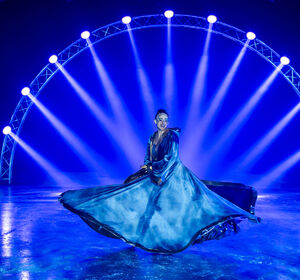
La Fille du Marchand de Sable
On 23 December, Méribel will be hosting an exceptional show: La Fille du Marchand de…
The 1920s, the Valley of Les Allues was only really known for its tranquillity. Life was peaceful, marked by farming and pastoral activities. In summer, the mountain pastures of Burgin, Mottaret and Le Saut were filled with herds of cattle. A few hotels in the main village welcomed guests in search of relaxation.
How did the valley go from being a quiet rural backwater to a resort of international renown?
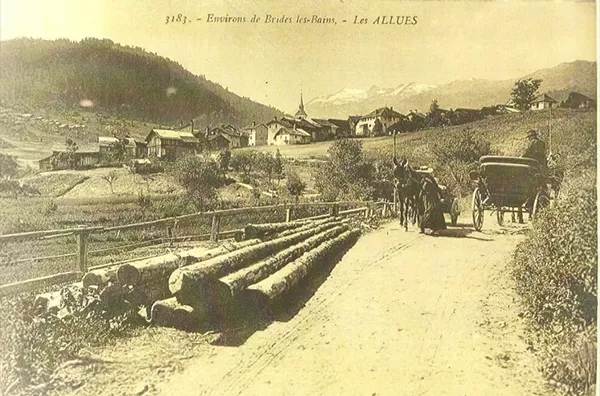
In the mid-1930s, the Alpine villages were gradually depopulated. In Les Allues, the village had only 520 inhabitants left: life in the mountains seemed to be dying out…
However, at the same time, a completely different movement was gaining momentum: the rise of skiing. The Winter Olympics in 1932 and then in 1936 showcased this sport as a technical and competitive discipline.
In 1935, the municipal council of Les Allues seized this emerging opportunity and launched an ambitious project: the creation of a ski resort beyond the hamlets of Mussillon and Morel. The project was entrusted to Paul Sirvin, a Parisian architect, and Jean de la Valdène, an engineer and former flying ace. The momentum was set in motion…
In 1937, Jean de la Valdène brought together several British investors, including Peter Lindsay, Lily Alvarez and skiing champion Billy Clyde.
💡 Where does the name Méribel come from?
The idea came from Jean de la Valdène and Lily Alvarez, who chose to use the name of the hamlet of Méribel for the future resort. The choice was also based on the sound of the word, which, to English-speakers, easily evokes Merry Bell.
In 1938, several iconic buildings were constructed, such as the Ski Club des Allues, which attracted many young people from the village. The Chalet Doron was also built, considered to be the very first building in the resort. But this hotel concealed a real innovation: the ‘télé-traîneau’ or ‘télé-luge’ (snow sledge), in other words, the very first cable car! Driven by a man, this device transported up to 19 skiers to the ‘Cave de Burgin’ (the site of the Folie Douce of today!) before descending backwards, following the same tracks.
“ It was a kind of motorised sledge, with chairs bolted to the platform and equipped with a cable reel that allowed it to climb the slope.”
— Joseph Etievent
But the war interrupted the initial momentum: many participants left, and work was put on hold.
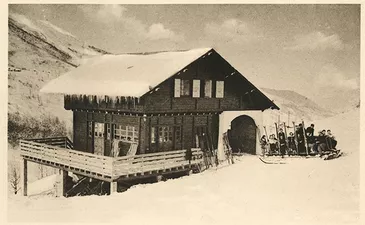
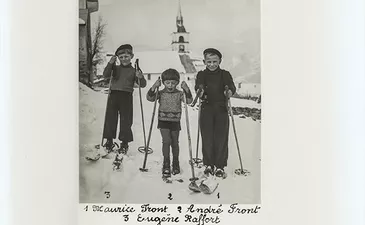
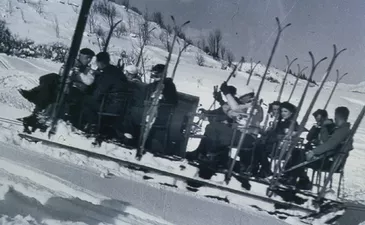
In 1946, development of the resort resumed under the direction of Scotsman Peter Lindsay. He was accompanied by a team of French designers, including Paul-Jacques Grillo, Charlotte Perriand, Georges Buzzi and André Detour.
He entrusted the architecture to Christian Durupt, whom he designated as the custodian of the Méribel style. Durupt faithfully followed the principles defined by Paul Sirvin in 1936: integration into the environment, use of traditional materials and preservation of the landscape. Wood and stone became the materials of choice, with double-pitch roofs covered with slate tiles and chalets of controlled height serving as architectural models.
“The arrival of architects Christian Durupt and André Detour marked a major milestone. They created the Méribel style: mountain chalets built of stone and wood with gabled roofs covered in slate. Méribel’s great strength lies in its ability to develop so many beds while respecting this architectural style.”
— Georges Mauduit
The time had come to build hotels and chalets to accommodate guests and second-home owners. The 1960s were a successful period for the fledgling resort, with hoteliers and valley residents enthusiastically throwing themselves into the tourist accommodation business. Around forty chalets and twenty hotels welcomed the English and French elite.
“The beginning of the resort was a dream come true! It was a time of huge potential for everyone: the first instructors, the first hotels. It was extraordinary. Take Gaston Braissand, the baker, for example: he came up from Moûtiers to Méribel to open a bakery without a penny to his name, and he succeeded! You had to set out with the idea of giving your all to what you wanted to do. Everything was within reach in Méribel.”
— Madeleine Gacon
Throughout the 1960s, the chalet route became denser and hotels multiplied, driven by the boom in skiing. In 1968, Méribel’s first chairlift was installed at the start of La Chaudanne: formerly known as La Cherferie, then Plan des Mains, and now Legends.
💡 Did you know ? Since the 1960s, major French stars have frequented the resort, including Brigitte Bardot, Johnny Hallyday and Marina Vlady.
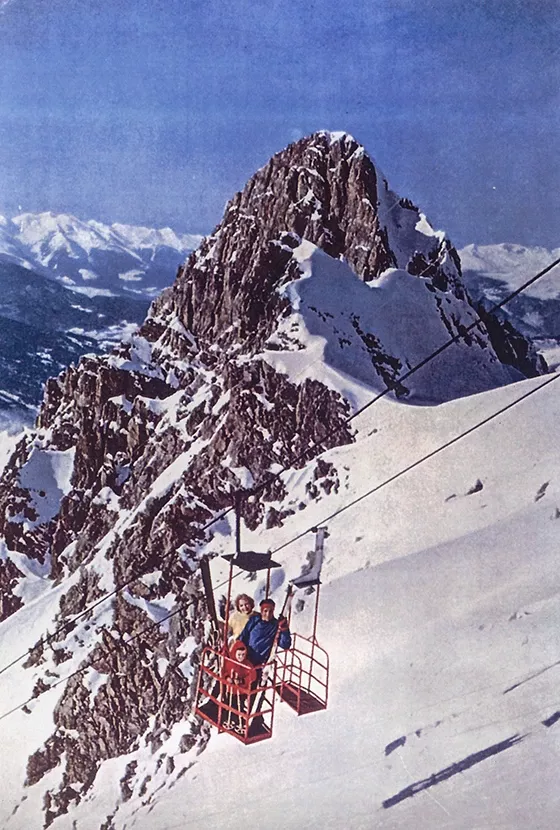
February 1976 marked the official opening of the new resort: Méribel-Mottaret. The ski services expanded. The ski area, which had at the time 31 slopes and 28 ski lifts, was gradually equipped to welcome new skiers and maintain the slopes. In 1978, the first snow cannons appeared.
In the 1980s, the Savoie established itself as a skiing mecca. The ski lift companies modernised their equipment, creating the Tougnète, Burgin-Saulire and Plattières gondola lifts. The link between the 3 Vallées was improved thus adding to the area’s attraction.
It is in this context that an Olympic project began to take shape.
Maurice Front, mayor of Méribel from 1984 to 2001, firmly believed in this dream. He supported the bid to host the Winter Olympics across the Tarentaise and Beaufortain regions.
17 October 1986 was a day of victory: Juan Antonio Samaranch, President of the International Olympic Committee, officially awarded the XVI Olympic Winter Games to the city of Albertville and the Savoie region. This was a significant step for the region.
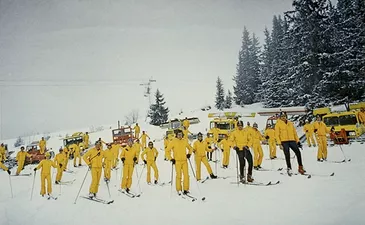
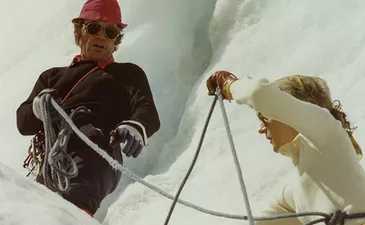
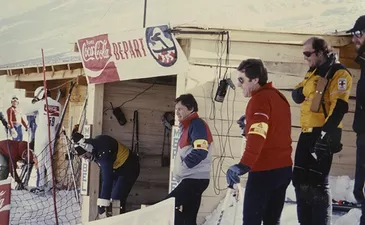
The work needed to the World’s most prestigious sporting event began in 1990: the Roc de Fer ski runs, ice rink, Rhodos cable car, Olympic village, etc. Excitement was at fever pitch…
Two years before the Games, the resort had already established itself as a champion’s playground. In 1990 and 1991, it proudly hosted two Downhill World Cups on the newly developed and steep slopes of Roc de Fer. The atmosphere was already decidedly Olympic…
Finally, in 1992, the long-awaited spectacle took place. Of a total of 126 events, 52 were held in the valley: 46 ice hockey matches and six women’s alpine events. With 52 events in 16 days, Méribel was buzzing day and night. The resort experienced a global media explosion.
What happened next? You probably know the story. Méribel has continued to evolve with its fans, visitors and locals both, driven by loyalty and love of the mountains, sport and elegance.
We are delighted to have lived this story with you and look forward to writing the next chapters together.